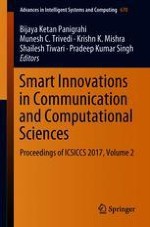The book provides insights into International Conference on Smart Innovations in Communications and Computational Sciences (ICSICCS 2017) held at North West Group of Institutions, Punjab, India. It presents new advances and research results in the fields of computer and communication written by leading researchers, engineers and scientists in the domain of interest from around the world. The book includes research work in all the areas of smart innovation, systems and technologies, embedded knowledge and intelligence, innovation and sustainability, advance computing, networking and informatics. It also focuses on the knowledge-transfer methodologies and innovation strategies employed to make this happen effectively. The combination of intelligent systems tools and a broad range of applications introduce a need for a synergy of disciplines from science and technology. Sample areas include, but are not limited to smart hardware, software design, smart computing technologies, intelligent communications and networking, web and informatics and computational sciences.
